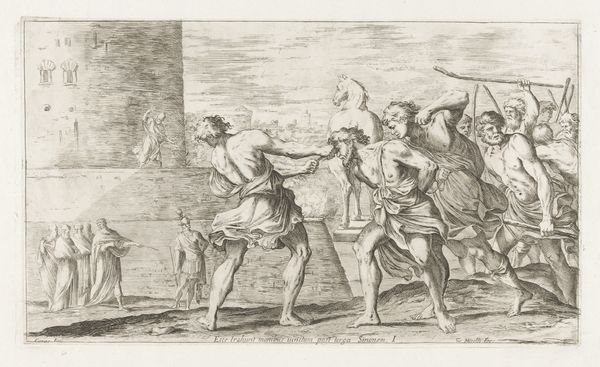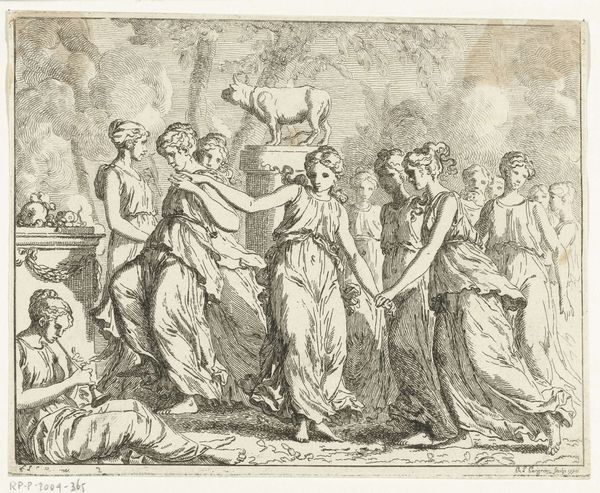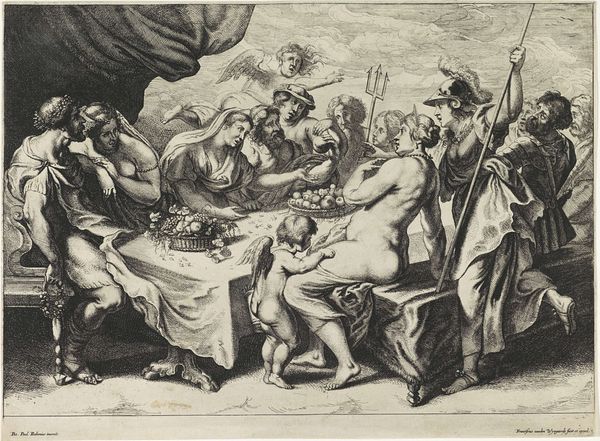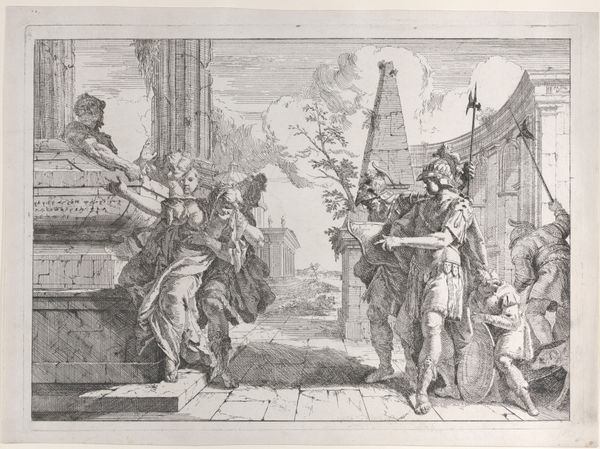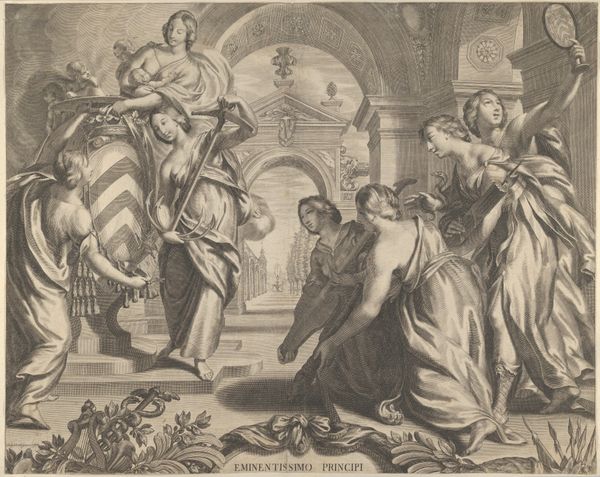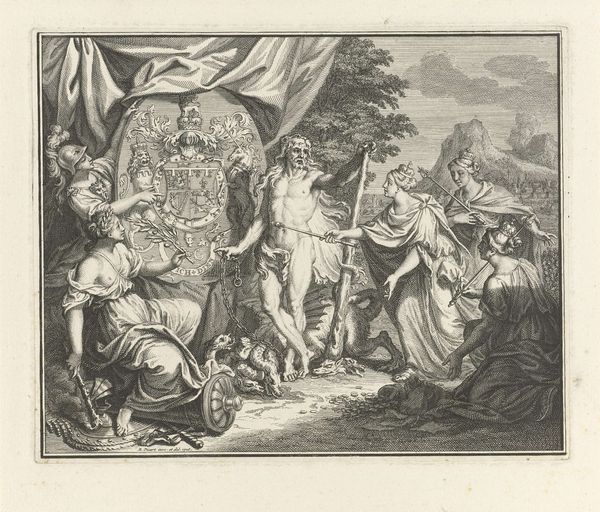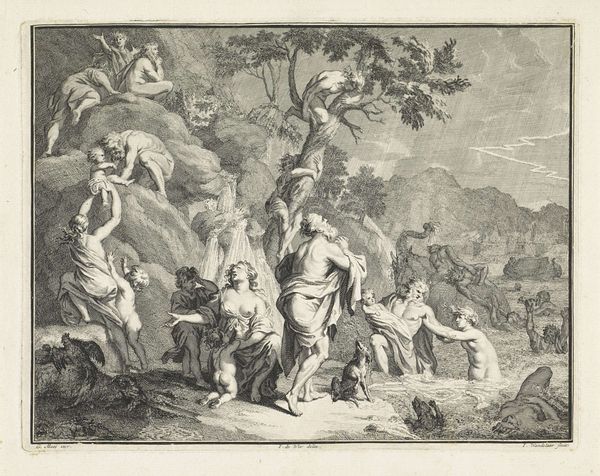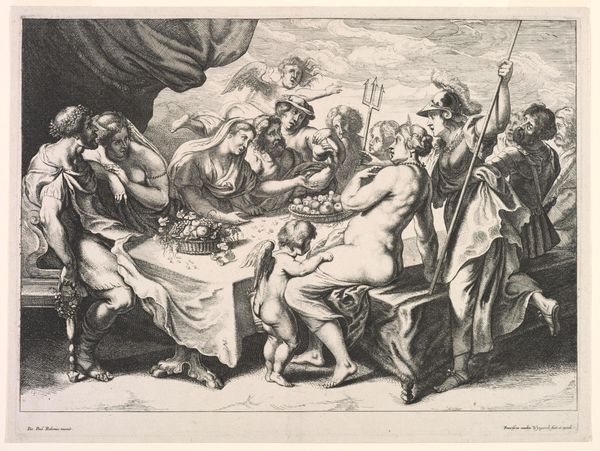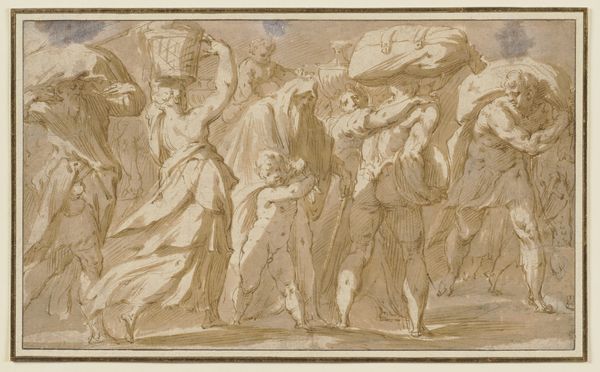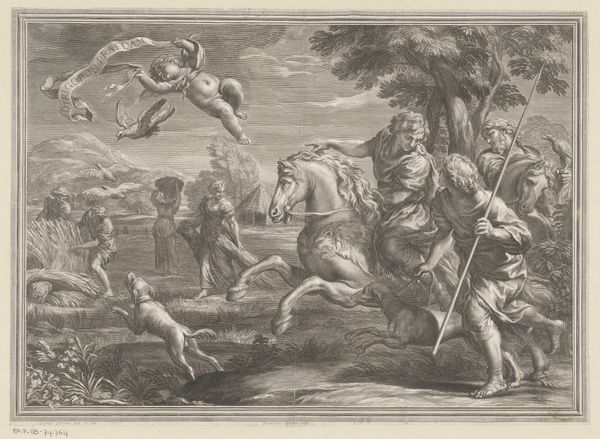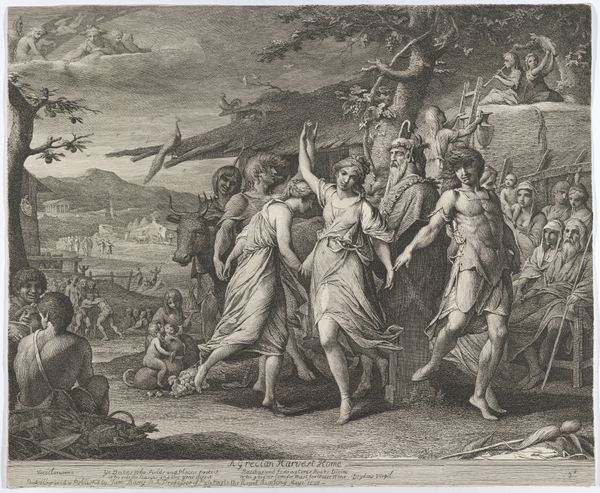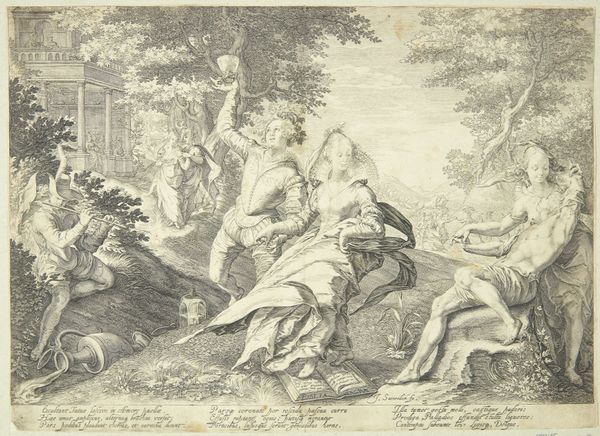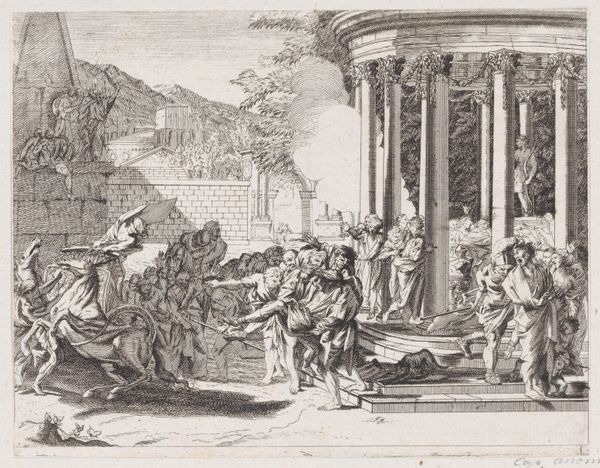
Rebecca Recognizes Isaak from Afar Possibly 1852 - 1860
0:00
0:00
Dimensions: 8 9/16 x 10 3/16 in. (21.75 x 25.88 cm) (image)10 1/2 x 10 15/16 in. (26.67 x 27.78 cm) (sheet)
Copyright: Public Domain
Julius Schnorr von Carolsfeld made this print, "Rebecca Recognizes Isaak from Afar", using etching and engraving techniques. Look closely, and you can see the rich, dark lines of the engraving, and the more textured, tonal areas created by etching. Prints like this one were essentially reproductive technology. This allowed von Carolsfeld to disseminate his artistic vision far beyond the reach of a unique painting. The image could be replicated, and sold relatively cheaply. Consider the labor involved: the artist's design, the skilled engraver's hand meticulously cutting the lines into the metal plate, and the printer who transferred the image to paper. All these people participated in a mini-industrial revolution. The sharp lines and precise detail, made possible by these processes, contribute to the scene's narrative clarity, but they also reflect a shift towards mass production and consumption of art in the 19th century. Appreciating this print means acknowledging the collaborative effort and the intricate processes that lie beneath its surface.
Comments
minneapolisinstituteofart almost 2 years ago
⋮
Abraham sent his servant Eliezer to find a wife for his son Isaac. Eliezer's plan was simple: He would choose the maiden who says, "Drink, and I will water your camels" (Genesis 24:14). That person was Rebecca. In this drawing, a recent gift to the Department of Prints and Drawings, she brings her brother Laban to greet Eliezer. The sumptuous contours confirm our recent attribution to the Netherlandish artist Maarten de Vos. It is a preparatory study for a painting at the Musée des Beaux-Arts in Rouen. Sixteenth-century audiences understood Rebecca to be the ideal of a submissive, obedient wife; she rode off the next day to marry Isaac. In contrast to de Vos's fluid modeling, learned at the knee of the Venetian master Tintoretto, Julius Schnorr von Carolsfeld valued clarity of line. His technique is precise, just like Rebecca's eyesight. Her gesture of farsightedness hints at the future, when she has firstborn rights transferred from Esau to her younger son, Jacob.
Join the conversation
Join millions of artists and users on Artera today and experience the ultimate creative platform.
